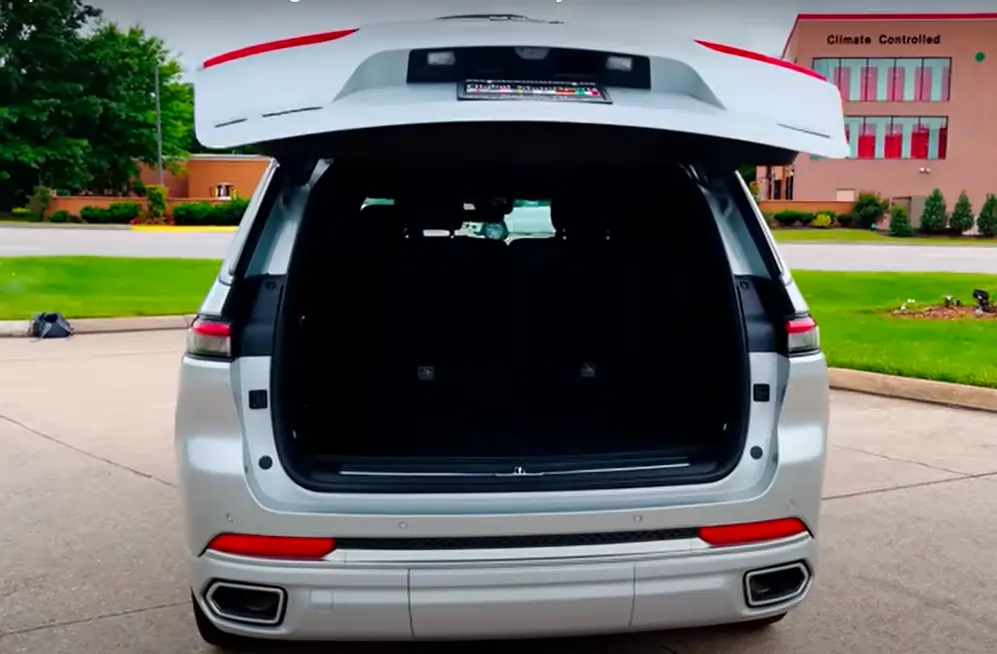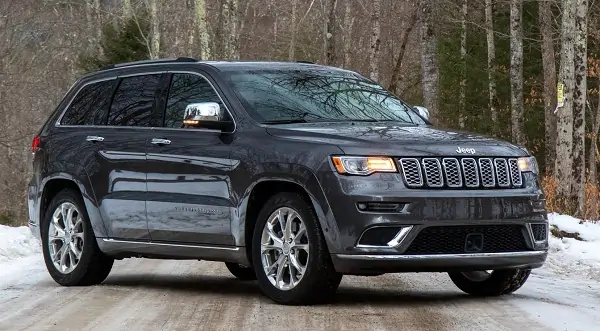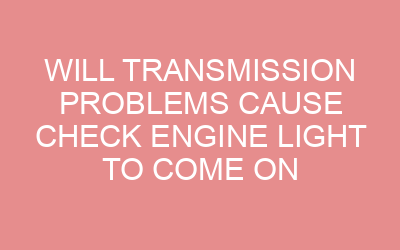When driving over a bump, a shaking in your Jeep suggests issues with the suspension or tires. This can be caused by worn-out shock absorbers, loose bolts, imbalanced tires, or damaged suspension components.
To pinpoint the exact cause, consider having your Jeep inspected by a professional mechanic who can identify and rectify the problem, ensuring a smoother and safer ride.
In this article, we will explore why my jeep shakes when I hit a bump. and we will try to find the possible reasons.
Why Does My Jeep Shake When I Hit A Bump
There are a few common reasons why your Jeep might shake when you drive over a bump in the road. The most likely cause is that your shock absorbers or struts need to be replaced. Shock absorbers and struts help smooth out the ride and absorb impacts from bumps.
When they start to wear out, your Jeep won’t be able to absorb bumps as well. This can cause the vehicle to bounce and vibrate when you hit bumps. Worn out shocks and struts can also cause handling and braking problems. So if your Jeep shakes a lot after hitting bumps, have a mechanic inspect the shocks and struts.
They may need to be replaced. Another possibility is that your tires or wheels are out of balance. This can also cause vibration when driving over bumps. A wheel alignment issue can also contribute to a bumpy ride.
So if new shocks don’t fix the issue, have the tire balance and alignment checked as well. With some new parts and an alignment, your Jeep should drive smooth again over those bumps.
Understanding The Common Causes Of Jeep Shaking
Experiencing a shaky ride whenever you hit a bump in your Jeep can be both frustrating and concerning. However, understanding the common causes of this issue can help you diagnose and resolve it effectively.
We will explore three main factors that can contribute to a Jeep shaking when encountering bumps: worn suspension components, imbalanced tires, and steering system issues.
Worn Suspension Components
One potential culprit behind your Jeep’s shaking is worn suspension components. Over time and with regular use, the various parts that make up your suspension system can wear down or even become damaged. This can result in a compromised ability to absorb shocks, leading to a bumpy and unsteady ride.
- Shock absorbers: Responsible for dampening and absorbing bumps and vibrations, worn-out shock absorbers can cause excessive bouncing and shaking.
- Struts: Similar to shock absorbers, struts help absorb shocks and provide support to the vehicle. If they become worn or damaged, they can lead to a rough ride.
- Control arms: These components connect the suspension system to the chassis of the Jeep. If they are worn or damaged, they can contribute to a shaky ride.
Imbalanced Tires
Another potential cause of Jeep shaking is imbalanced tires. When your tires are not properly balanced, they can create uneven weight distribution, which can result in vibrations and shaking when you hit a bump or drive at higher speeds.
- Uneven tread wear: If the tread on your tires wears down unevenly, it can lead to imbalances and vibrations.
- Missing or improperly installed wheel weights: Wheel weights are used to balance the tire and ensure even weight distribution. If these weights are missing or not installed correctly, it can result in imbalances.
Steering System Issues
Lastly, issues with your Jeep’s steering system can also contribute to shaking when hitting a bump. A properly functioning steering system is essential for maintaining stability and control while driving, so any problems can have a noticeable impact on your ride.
Common steering system issues that can cause shaking include:
- Worn or damaged steering components: Components such as tie rods, ball joints, and bushings can wear down over time, leading to instability and shaking.
- Improper wheel alignment: If your wheels are not aligned correctly, it can result in uneven tire wear and shaking when encountering bumps.
- Loose or worn steering linkages: Loose or worn steering linkages can cause your Jeep to feel unresponsive and unstable, particularly when hitting bumps.
By understanding these common causes of Jeep shaking, you can begin to pinpoint the issue and take appropriate steps to resolve it.
Whether it involves replacing worn suspension components, balancing your tires, or addressing steering system problems, resolving these issues will not only enhance your driving experience but also contribute to the overall safety and performance of your Jeep.
Assessing And Resolving Worn Suspension Components
Experiencing a shaky ride whenever you hit a bump in your Jeep can be a frustrating and potentially dangerous issue. One of the common causes of this problem is worn suspension components.
The suspension system of your Jeep is responsible for providing stability and a smooth ride by absorbing the impact of bumps and uneven surfaces. Over time, the various components of the suspension system can wear out and lead to vibrations and shaking.
In this section, we will discuss how to assess and resolve worn suspension components to help you regain the smooth and comfortable ride you deserve.
Inspecting Control Arms And Bushings
Control arms and bushings play a crucial role in the suspension system of your Jeep. They connect the wheel hubs to the frame of the vehicle and allow for smooth movement while maintaining stability.
Over time, control arms and bushings can wear out due to constant exposure to road vibrations, dirt, and debris. To assess their condition, visually inspect the control arms and bushings for signs of wear or damage.
Look for cracks, tears, or excessive play in the joints. If you notice any issues, it is recommended to replace the worn-out control arms and bushings to restore the proper functioning of your suspension system.
Checking The Ball Joints
Ball joints are another critical component of the suspension system that can cause shaking and vibrations when worn out. These joints connect the steering knuckles to the control arms and allow for smooth movement during steering.
To check the condition of the ball joints, lift your Jeep using a jack and securely support it on jack stands. With the wheels off the ground, grab the tire at the top and bottom and try to move it in and out.
If you feel excessive play or hear clunking noises, it indicates worn ball joints. In such cases, it is essential to replace the worn-out ball joints to restore the stability and smoothness of your Jeep’s ride.
Evaluating The Shock Absorbers
Shock absorbers, also known as dampers, are responsible for controlling the movement of the suspension system by absorbing the impact of bumps and dips in the road.
When shock absorbers wear out, they lose their ability to provide proper damping, leading to a bumpy and shaky ride. To evaluate the condition of your Jeep’s shock absorbers, visually inspect them for leaks, damage, or signs of excessive wear.
Additionally, test the shock absorbers by bouncing each corner of your Jeep and observing how the suspension responds. If you notice excessive bouncing or lack of control, it indicates worn-out shock absorbers that need to be replaced for improved ride quality and safety.
Balancing Tires For A Smoother Ride
Addressing Steering System Issues For Improved Stability
If your Jeep shakes when you hit a bump, it might indicate steering system issues. Addressing these problems can improve stability and ensure a smoother driving experience. Find out what could be causing the shaking and how to resolve it.
When driving your Jeep, stability is crucial for a safe and comfortable ride. If you notice your Jeep shaking when you hit a bump, it could be a sign of steering system issues.
Addressing these issues is essential to ensure improved stability and overall performance of your vehicle. In this section, we will discuss how to identify damaged or worn steering components, examine tie rod ends and steering dampers, and align the steering system.
Identifying Damaged Or Worn Steering Components
One of the primary causes of Jeep shaking when hitting a bump is damaged or worn steering components. These components can include the steering gearbox, ball joints, pitman arm, or control arm bushings.
To identify any issues, visually inspect each component for signs of damage such as cracks, excessive wear, or loose connections.
When inspecting the steering gearbox, check for any leaks or excessive play in the steering wheel. Examine the ball joints by looking for excessive movement or play when the suspension is compressed and extended.
Additionally, inspect the pitman arm and control arm bushings for any signs of wear or deformation.
Examining Tie Rod Ends And Steering Dampers
Tie rod ends and steering dampers play a crucial role in maintaining stability and reducing vibrations.
These components can wear out over time, leading to shaking when encountering bumps. Begin by inspecting the tie rod ends for any signs of wear, such as loose connections, damaged boots, or worn-out ball joints.
Next, examine the steering dampers for leaks or excessive movement. A worn-out steering damper can lead to reduced control and stability, resulting in shakes when hitting bumps. If any of these components show signs of damage or wear, it is recommended to replace them with high-quality replacements to ensure optimal performance.
Aligning The Steering System
Proper alignment is vital for a stable and smooth ride. Misalignment can cause uneven tire wear, steering wheel vibration, and a shaky driving experience. To align the steering system, it is best to seek professional assistance from a trusted mechanic or alignment specialist.
During the alignment process, the mechanic will adjust the camber, caster, and toe angles to ensure they are within the manufacturer’s specifications. This will improve the overall stability of your Jeep and minimize the chances of shaking when encountering bumps.
In conclusion, addressing steering system issues is essential to improve stability and ensure a safe driving experience. By identifying damaged or worn steering components, examining tie rod ends and steering dampers, and aligning the steering system, you can significantly reduce shaking when hitting bumps and enjoy a smoother ride in your Jeep.
Extra Measures: Tips For A Smooth And Safe Ride
If you’re tired of experiencing a shaky ride every time you hit a bump in your Jeep, there are a few extra measures you can take to ensure a smoother and safer journey.
By focusing on regular maintenance checks, proper tire inflation, and safe driving habits, you can minimize the shaking and enhance your overall driving experience. Let’s delve into each of these measures in more detail.
Regular Maintenance Checks
Maintaining your Jeep on a regular basis is crucial for a smooth and trouble-free ride. Here are a few maintenance checks that you should carry out:
- Inspect Your Suspension System: The suspension system plays a vital role in providing a comfortable ride by absorbing shocks and vibrations. Regularly check for any worn-out or damaged components like bushings, shock absorbers, and control arms. Replace these parts if necessary to minimize the shaking.
- Check Your Steering Components: Faulty steering components can contribute to a shaky ride. Inspect your tie rod ends, ball joints, and steering damper for any signs of wear or looseness. Replace any faulty components promptly to ensure optimal steering performance.
- Examine your Driveshaft: A damaged or imbalanced driveshaft can cause vibrations and shaking. Look for signs of dents, cracks, or excessive play in your driveshaft. If you notice any issues, it’s essential to have it repaired or replaced by a qualified technician.
Proper Tire Inflation
One of the main reasons for a shaky ride in a Jeep is improperly inflated tires. Follow these simple steps to ensure proper tire inflation:
- Check the Manufacturer’s Recommended Pressure: Refer to your Jeep’s owner manual or the tire placard found on the driver’s side door jamb to determine the recommended tire pressure.
- Regularly Check Tire Pressure: Invest in a reliable tire pressure gauge and regularly check the pressure in all four tires. Underinflated or overinflated tires can lead to uneven wear and cause vibrations in the vehicle.
- Adjust Tire Pressure as Needed: If the tire pressure is too high or too low, use an air pump or release air from the tire to reach the manufacturer’s recommended pressure. Be sure to check the pressure again after adjustment.
Safe Driving Habits
Practicing safe driving habits not only ensures your safety but also helps in reducing the shaking when hitting bumps. Consider the following tips:
- Slow Down on Uneven Surfaces: When driving over bumps or rough roads, reduce your speed to minimize the impact on the suspension system, which in turn reduces shaking.
- Avoid Potholes and Obstacles: Whenever possible, try to avoid potholes, speed bumps, and other road obstacles that can cause excessive shaking and potential damage to your Jeep.
- Adjust Your Driving Technique: Adopt a smoother driving technique by avoiding sudden braking, accelerating, or steering. Gradual and controlled movements help in preventing unnecessary vibrations.
By following these extra measures and taking proactive steps to address potential issues, you can enjoy a smoother and safer ride in your Jeep. Regular maintenance checks, proper tire inflation, and safe driving habits contribute to a more enjoyable driving experience.
Frequently Asked Questions For Why Does My Jeep Shake When I Hit A Bump
Why Does My Jeep Shake When I Go Over A Bump?
Your Jeep shakes when going over a bump due to worn-out or damaged suspension components. These include ball joints, shocks, and control arms. Proper maintenance will help resolve the issue and ensure a smoother ride. Get your suspension inspected by a professional to identify and fix the problem.
Why Does My Jeep Shake When I Hit A Pothole?
Hitting a pothole can cause your Jeep to shake because it disrupts the suspension system, potentially misaligning the wheels. This misalignment can lead to uneven tire wear, which in turn causes vibrations. Regular maintenance and prompt repairs can help prevent this issue.
Why Does My Car Shake Violently After Hitting A Bump?
Car shaking violently after hitting a bump is usually due to problems with suspension components or wheel alignment. Such issues can cause tires to lose contact with the road, resulting in a shaky ride. It’s advisable to have a mechanic inspect your car for any necessary repairs to ensure a smooth and safe driving experience.
How Do You Fix A Jeep Death Wobble?
To fix Jeep death wobble, start by checking tire pressure, balancing the tires, and inspecting for worn or damaged parts. Tightening the track bar, steering stabilizer, and control arm bolts may also help. It’s important to seek professional assistance if needed.
Conclusion
If you’re experiencing a shaking sensation when you hit a bump in your Jeep, it’s essential to address the issue promptly. Neglecting the problem could lead to more significant and costly repairs down the line. By identifying the root cause of the shaking, such as worn-out suspension components or imbalanced tires, you can ensure a smoother and safer ride.
Don’t hesitate to consult a professional mechanic who can provide expert guidance and necessary repairs to address this concern effectively.














Leave a Reply